 the Archive of World War 1 Photographs and Texts
the Archive of World War 1 Photographs and Texts

The Battle of Tsingtao
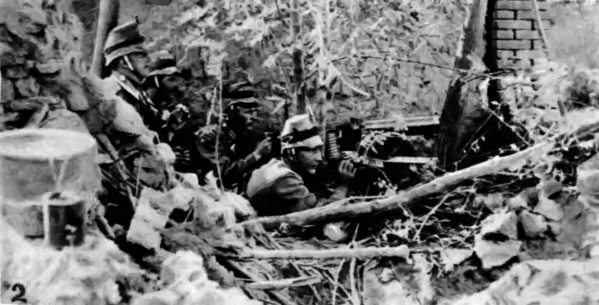
German Machine Gun Crew |
The German garrison at Tsing-tau (Tsingtao) included five battalions of infantry, fire battalions of marine artillery, one battalion of mechanics, and about 2500 reservists. The German garrison fell to the Japanese and British on November 7,1914. This photographs shows men of the German Third Sea Battalion entrenched with a machine-gun.
|
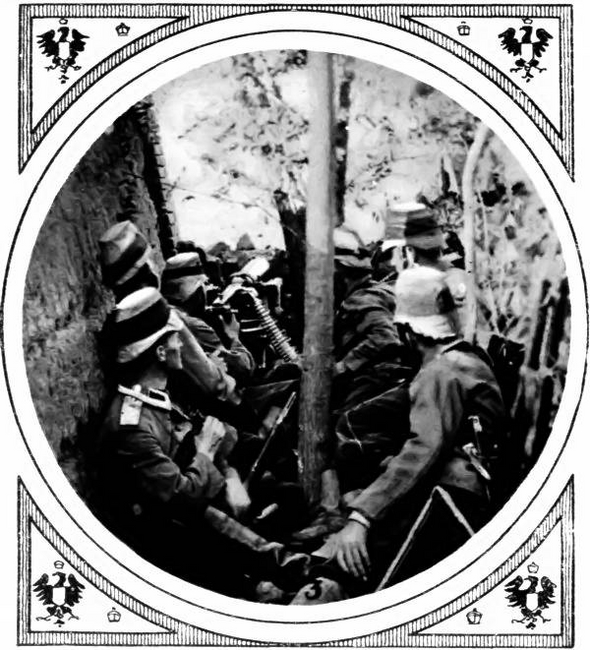
German troops defending the German colony and fortress in China. |
A photograph of the German defenders firing a machine gun from behind a fort wall.
|
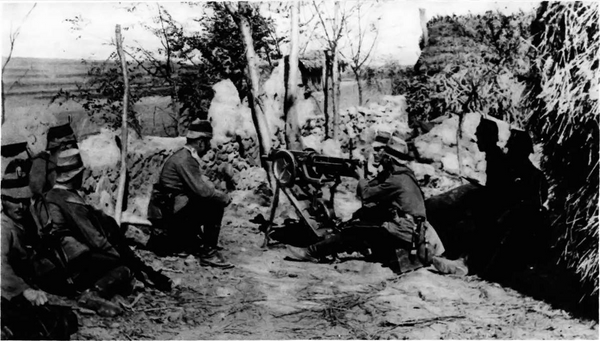
German machine gun crew in action in China during World War 1.
At midnight on November 6—seven hours before the German garrison of Tsing-tau surrendered, the central fort was captured by the Japanese, who took 200 prisoners. The Germans had made great efforts to repair their batteries, but the shell-fire from the Japanese guns was too heavy. After the central fort had fallen the Japanese captured at the point of the bayonet other forts and the strong field-works connecting them. It was stated that some 2300 German prisoners were taken when Tsing-tau surrendered. The German garrison, it is said, included four companies of seaman gunners, an equal force of Marines, some cavalry and field gunners, and a company of sappers. Probably the garrison increased after the war began, as Germans from all parts of China gathered at Tsing-tau for protection.
|
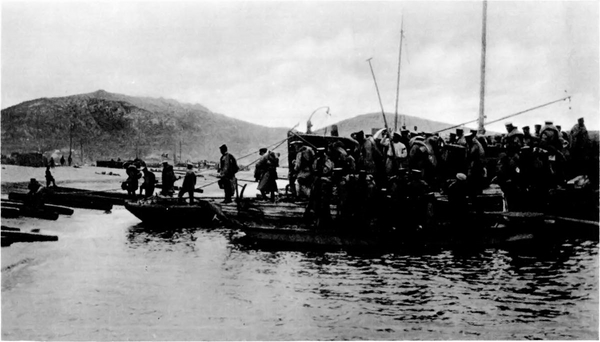
Japanese troops on the offensive in China.
Japanese troops staging an amphibious crossing during the battle for Tsingtau.
After the fall of Tsing-tau on November 7 the British Admiralty cabled to the Japanese Minister of Marine: "The Board of Admiralty send their heartiest congratulations to the gallant Army and Navy of Japan on the prosperous and brilliant issue of the operations which have resulted in the fall of Tsing-tau." The Japanese began the blockade on August 27, occupying some neighbouring islands as a base. Mine-sweeping was the first task, and then, on September 18, the Japanese troops landed safely at Lao-shan Bay. They fought with great valour and suffered considerable losses. Their casualties up to November 6 were given as 200 killed and 878 wounded. In the final assault they had 14 officers wounded and 426 men killed and wounded. The number of Germans captured was 2300.
|
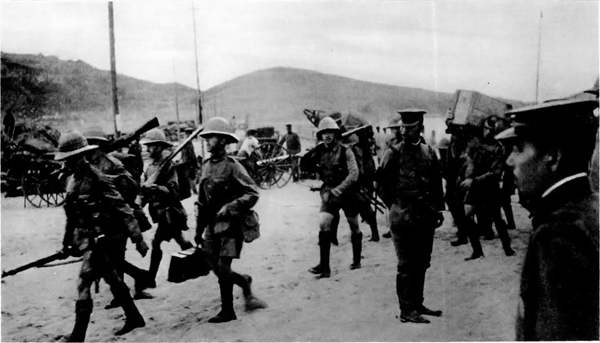
British and Japanese Troops |
|
Photograph of British and Japanese troops cooperating in operations against the Germans in China.
In his telegram to the Japanese Minister of War after the capture of Tsing-tau, Lord Kitchener said: "Please accept my warmest congratulations on the success of the operations against Tsing-tau. Will you be so kind as to express my felicitations to the Japanese forces engaged? The British Army is proud to have been associated with its gallant Japanese comrades in this enterprise." The British force, under Brigadier-General N. Barnardiston, Commanding the Forces in North China, landed in Lao-shan Bay on September 24. Some Indian troops also took part in the fighting. The Emperor of Japan sent a message to the British force saying that he "deeply appreciates the brilliant deeds of the British Army and Navy co-operating with the Japanese." |